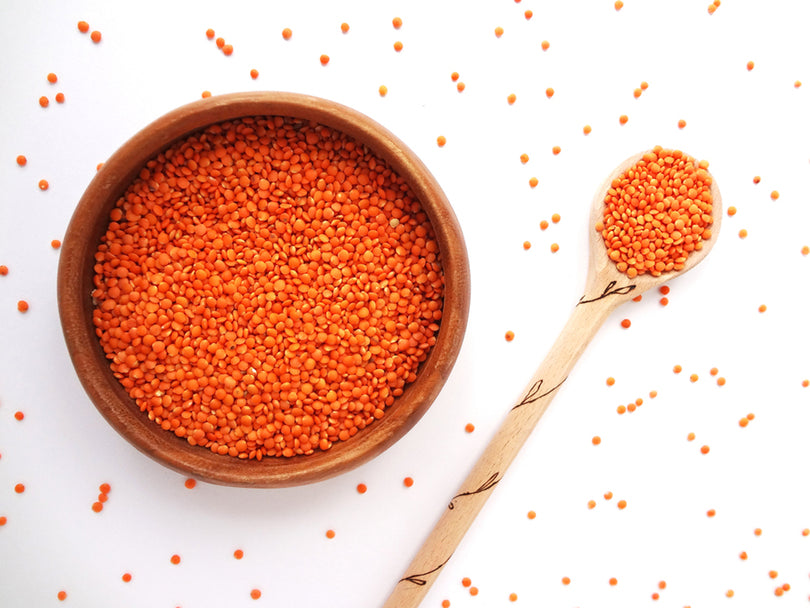9 Easy Healthy Eating Tips


We all know we should be eating healthily, but sometimes a complete overhaul of your diet can seem like a really big task.
The good news is that you don’t have to approach healthy eating that way — you can make it easier on yourself if you break it down into smaller, achievable changes. They might seem like little changes to start, but they can actually add up to making a big difference to your health and fitness goals.
Try my nine easy healthy eating tips you can start quickly and easily — without putting too much pressure on yourself!
1. Drink more water
Proper hydration is fundamental to good health, but lots of women don’t drink enough water. Dehydration can mess with your body, so make sure you’re drinking plenty of water and eating hydrating foods each day. Drinking enough water can be key to feeling better if you’re struggling with lethargy — try boosting your water intake and see if it helps. Make sure you have at least one glass between each meal and snack as a starting point.
I keep a reusable water bottle with me all day, and it’s something I definitely recommend. You can set a daily goal and track how much water you’re drinking in the Sweat app — just tap the “trophy” icon in the top right corner of your dashboard and you can keep adding to it until you reach your daily goal.
2. Make it colourful
Try to eat a variety of fruits and vegetables, instead of eating the same thing every day. Eating a wide range of fresh food means you are getting a variety of vitamins and minerals. It also makes meals more appealing, both visually and in terms of flavour!
Keep it simple — make it colourful! The more different colours you’re eating, the better, as each colour of vegetable contains different vitamins, minerals or antioxidants our bodies need.
3. Cook at home
Food delivery services are everywhere, making it almost TOO easy to order food in. However, one advantage of cooking meals at home is that you know exactly what is going into them and you’re more in control of what you’re eating — you can make swaps to keep your food healthy, but still delicious. Try some of my recipes for ideas and get creative!
If you find that you are short on time for shopping and cooking, you could try meal prep, or a meal kit delivery option that does all the planning, shopping and prepping for you — all you need to do is cook it!
4. Switch to wholegrain
Whole grains have more fibre, antioxidants and vitamins and minerals than refined grains. They also keep you fuller for longer.
Whole grain substitutes are SO easy to find — try swapping your usual bread for a wholegrain version, buy wholemeal rather than white pasta or swap for barley or quinoa instead. Swap your regular cereal or toast for untoasted muesli or porridge.
5. Know what you need to fuel your body
It’s easy to misjudge how much you need to eat. Taking notice of serving sizes in recipes can help you to learn what portion sizes look like and to see how much you’re eating, so you’re meeting your nutritional needs with the right amount of fuel.
One simple way to start is with your hand as a guide. Serve yourself a palm-sized piece of protein and a cupped palm of carbohydrates like rice, pasta or quinoa. A serving of fruit or vegetables is about the size of your fist (you need five fists of vegetables and two of fruit each day). Your whole thumb is about the right serving for nut butter or cheese, and your thumbnail for butter, mayonnaise or oil.
6. Check your plate
I love eating Mediterranean-style foods — my meals contain a good balance of macronutrients (fats, proteins and carbohydrates) and my goal is to eat foods I love, and meals and snacks that give me enough fuel to do everything I need to, including train. Protein helps to keep you feeling full for longer as well as helping with muscle growth and recovery from exercise. Carbohydrates are also an important source of the fuel needed to get through the day.
When you serve your next meal, an easy way to make sure your meal is balanced is to check your plate. Ideally, it should be about one-quarter protein, one-quarter carbohydrate and half vegetables or salad.
I usually eat dinner with my family, and one way we make sure we’re eating a lot of vegetables is to have a lot of side dishes — salads and roasted vegetables are a great option.
If you find you’re struggling to fill half of your plate with vegetables, think about how you can easily add more to your meals. Roast some of your favourite vegetables at the start of the week put them in the fridge and add them to your meals.
You could also try adding salad ingredients to your weekly shopping list so they’re ready to add as a side dish to your meal — you can make salads quickly, and easily switch up the ingredients to make sure you’ve got variety throughout the week.
7. Swap to healthier snacks
Snack time can be the moment when healthy eating goals go out the window. While I don’t meal prep — I like to shop a few times throughout the week — I definitely do snack prep! Making snacks ahead of time means you always have a healthy option, even on the days you’re short on time.
I like to cut up vegetable sticks and store them in an airtight container in the fridge. Preparing vegetables this way is SO easy, and then they’re ready for whenever you need a snack. They’re also a healthy option to take with you if you’re on the go.
I might eat them on their own or with homemade hummus or tzatziki — these dips take only a few minutes to make and trust me, they are much more delicious than the store-bought options. Pairing dips with vegetable sticks makes for the perfect easy, healthy snack.
If you want other healthy snack swaps, try some unsalted popcorn instead of cookies, swap your crackers for a wholegrain version, or switch your regular peanut butter for a natural unsalted, unsweetened version. Small swaps can make a big difference in the amount of added sugar and salt in your food.
8. Level up the flavour
You can avoid adding artificial flavours, salt and sugar to meals simply by using more natural flavourings, such as herbs and spices, instead.
For example, my salad dressings are so simple but SO good — I combine dried oregano, balsamic vinegar, olive oil and salt and pepper — but there are so many other herb and flavour combinations you can try without much effort at all.
Fresh herbs are amazing for taking your salads to the next level — add a handful of fresh basil, coriander (cilantro) or parsley for a healthy flavour boost. Making sure your meals have lots of flavour is key to actually enjoying it!
9. Eat the foods you love
My philosophy with healthy eating is that it shouldn’t feel like a chore, it shouldn’t take a lot of time, and it should include the foods you LOVE. Your meals should be nutritious and enjoyable — if you use quality ingredients and less processed foods in recipes, you can also maximise your nutrient intake.
Focus on quality, and make sure you genuinely enjoy the food you’re eating — this will make it easier to stick with healthy eating in the long term.
Try these small changes to start eating healthier
If you want to improve your eating habits, try these tips to kickstart a healthier approach to nutrition.
Just pick one or two achievable changes to start with, and add more as you continue your health and fitness journey. You may find that these small changes can improve your health and add up to making a big difference in the long-term!
* Disclaimer: This blog post is not intended to replace the advice of a medical professional. The above information should not be used to diagnose, treat, or prevent any disease or medical condition. Please consult your doctor before making any changes to your diet, sleep methods, daily activity, or fitness routine. Sweat assumes no responsibility for any personal injury or damage sustained by any recommendations, opinions, or advice given in this article.




<#= c.user.username #><#= moment(c.created_at * 1000).fromNow() #>
<#= c.html_body #> <# if (c.images) { #>
<# } #>